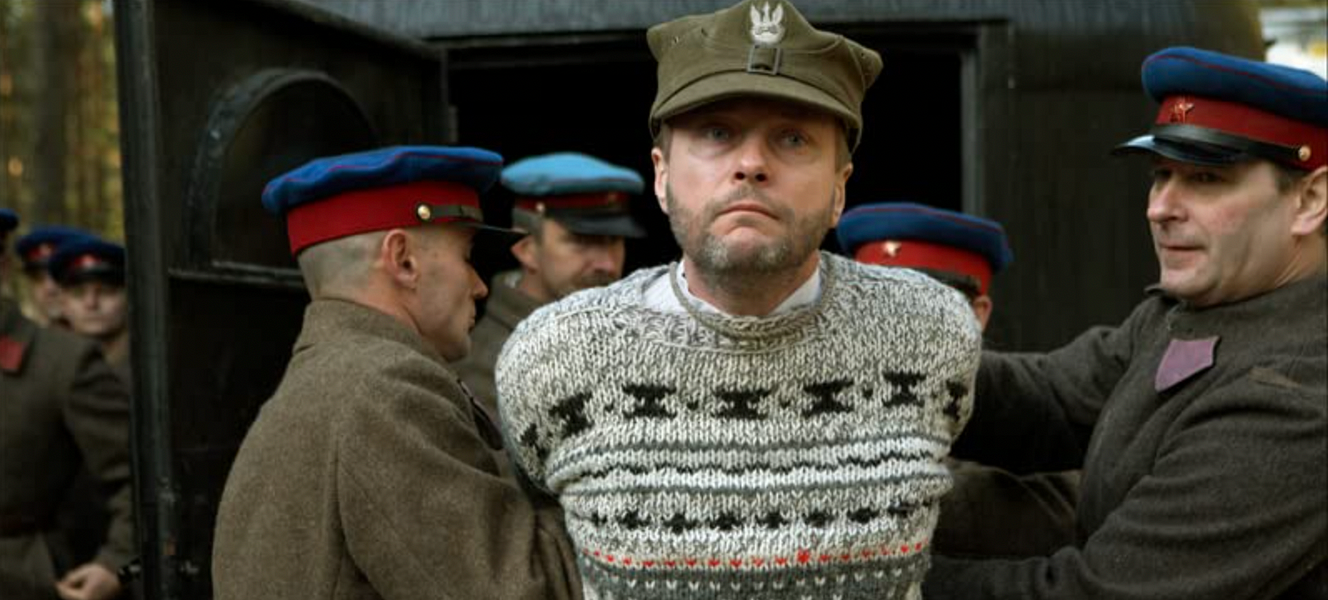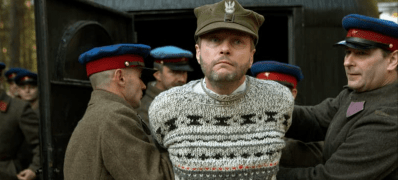There is a hunger within us for our national issues to be portrayed and memorialized through art in a non-ideological way, a way that speaks to everyone. This is not a uniquely American desire. Every culture has required a remembrance through universal storytelling. Prehistoric peoples drew cave art we are still discovering; the Mesopotamians created The Epic of Gilgamesh; the Israelites received and wrote the Holy Scriptures; the Greeks had the poet Homer. We have not evolved beyond this cultural need.
Even so, we do not see much contemporary American art that serves this function. Sure, artists produce work—popular, underground, and academic—addressing our social issues, but it usually works to condemn one specific side and encourage the other. Liberal filmmaking is filled with movies like Don’t Look Up, The Power of the Dog, and Promising Young Woman that affirm the virtue of a certain audience but rarely gain traction outside them. Most of the poetry books being published and gaining media attention, despite their quality, are leftist and academic with very few everyday readers, books like Claudia Rankine’s Citizen or Ocean Vuong’s Night Sky with Exit Wounds. The most popular current American music, hip-hop, fares better with audiences, but much of the country is still disengaged with it. However, we may see better examples of art serving a national function if we turn our attention elsewhere.
For one of the best examples of popular art exploring national issues and defending the national memory in universal stories, we would do well to turn to a country with war even now at its gates: Poland and Polish cinema.
Poland has been invaded and conquered time after time throughout modern history. Yet the Poles have always come back, and indeed have helped other countries and peoples during those hard times, just like they are doing now in bravely embracing Ukrainian refugees. Few countries in world history have been able to reemerge time and time again as Poland has, and much of this has to do with the Poles’ ability to defend their national memory, even in secret and under extreme persecution, even when the rest of the world has disregarded them as weak and inept. These attitudes are represented well in Polish art, especially through their popular poetry of cinema.
Their best filmmakers retain their ancestral abilities of community survival and make amazing films with deeply personal, nonpartisan stories that thematically discuss widely national issues.
Chief among those who have already looked to Polish cinema for spiritual kinship, inspiration, and advice is Martin Scorsese, whose Film Foundation and World Cinema Project have worked for years to preserve and promote Polish cinema, both past and present. In a 2014 Salon interview, Scorsese said:
“The level of craft [in Polish film] is extremely high . . . This isn’t true of all cinemas: Some cultures are more visually oriented than others. Then, there’s a certain sardonic quality, coupled with a profound love of freedom. That might seem like a contradiction, but it’s two artistic and moral impulses that seem like direct outgrowths of life during the Communist era. . . The answer [to ‘what can American viewers find in Polish cinema now’] is simple: inspiration, excitement, beauty, surprise, tenderness, horror . . . a living response to the world through images and sounds.”
In Polish cinema, Scorsese found lessons we too can learn.
To begin exploring Polish cinema and the rare way its artists effortlessly weave large themes into small stories, there are few better places to start than the films of Krzysztof Kieślowski, one of Poland’s best directors. As Stanley Kubrick said in a 1991 book of screenplays, Decalogue: The Ten Commandments, Kieślowski has “the very rare ability to dramatize [his] ideas rather than just talking about them.”
Consider Kieślowski’s greatest film, Three Colors: Blue (1994). Kieślowski explores the ideal of liberty and the formation of the European Union after the fall of the Soviet Union. He feels hopeful that Europe is rid of Soviet oppression, but he is not completely sure of the liberation purportedly offered by the new European order. However, Kieślowski does not explore his concerns through an explicitly political film. Instead, his story examines a middle-aged woman, Julie, the wife of a famous French composer, who is suddenly robbed of her husband and daughter in a car wreck with them that only she survives. When she recovers from her own wounds and depression, Julie abandons her old life and tries to live anonymously and free. Yet she is constantly confronted with her responsibilities, by a boy who witnessed the accident, by stories of her husband’s infidelity, and by the overwhelming music for the Unity of Europe that her husband had started and her new lover wishes her to finish. Her inability to cast off duties is also symbolized through an exotic dancer Julie befriends and admires. Julie covets this younger woman’s apparently carefree life, but the positive vision muddies when the dancer has a nervous breakdown because her father unknowingly watches her strip one night. All of this is told visually and sonically in a manner so beautiful it rivals the cinematography, employment of color, and sound design of the Chinese masters Zhang Yimou and Wong Kar-wai.
Kieślowski is not the only Polish director worth watching. Though there are many directors to seek out—most of whom are Catholic or, like Kieślowski, heavily influenced by Catholicism—among the best are Andrzej Wajda and Paweł Pawlikowski.
Wajda is Poland’s greatest filmmaker. He gained prominence with his most iconic picture, Ashes and Diamonds (1958), and went on to make such classics as Korczak (1990) and Katyń (2007). Most of his movies address Polish issues in a more direct way than Kieślowski’s films, but they are no less effective.
Katyń is an exceptional, harrowing movie, covering the 1940 Katyn massacre where nearly 22,000 Polish military officers and intelligentsia were executed by the Soviet Union. Instead of using the victims’ points of view, Wajda shows us the tragedy through the eyes of several survivors: mothers, wives, and daughters who fought in various ways to survive the massacre’s aftermath. Korczak is a black-and-white biographical war film—written by another great Polish filmmaker, Agnieszka Holland, who recently directed the excellent Mr. Jones (2019)—about Polish-Jewish humanitarian Janusz Korczak, who, after spending years as the principal of a Warsaw orphanage, refused sanctuary and stayed with his orphans when the entire institution was sent to the Nazi Treblinka extermination camp during the 1942 Grossaktion Warsaw. These movies remind the Polish people of their national tragedies, braveries, and resilience.
Wajda has had a larger influence on American filmmakers than any other Polish filmmaker. Scorsese lists Ashes and Diamonds among his few favorite films. Korczak influenced Steven Spielberg in making Schindler’s List and, and Spielberg even used some of Wajda’s Korczak crew while filming his own movie. Later, in a letter supporting Wajda for a 2000 honorary Academy Award, Spielberg called Korczak “one of the most important European pictures about the Holocaust,” and regarding Wajda himself, Spielberg said, “By striving to show both the loftiest heights and the darkest depths of the European soul, he has inspired all of us to re-examine the strength of our common humanity. Wajda belongs to Poland, but his films are part of the cultural treasure of all mankind.”
Fans of more recent art house films will likely recognize Paweł Pawlikowski, whose two most recent pictures—Ida (2013) and Cold War (2018)—were both nominated for numerous Oscars. Ida won the 2015 Academy Award for Best Foreign Language Film, becoming the first Polish film to do so, and it explores the effects tyranny and Christianity may have on and against each other, contrasting the lives of a young Polish woman on the verge of taking vows to become a Catholic nun with her older aunt, a once idealistic socialist who became cynical and disillusioned during her time as a Soviet judge. Cold War explores the effects of oppression on the artistic soul through the romance of a composer and a singer behind the Iron Curtain. Pawlikowski, like Kieślowski, uses individual stories not only to communicate his own personal experience but also as a metaphor for the Polish national experience.
These films and filmmakers are just a few of the great rewards one may reap and the education one may acquire through Polish cinema. They have a hope in them too, tempered by harsh, terrifying realities. There is much more into which to delve as well.
One of the best places to start searching is Martin Scorsese’s curated series of introductory Polish films, “Masterpieces of Polish Cinema,” which includes some of the previously discussed films and several others. Other good places to start are the British Film Institute’s list of 10 great Polish films, the ever underrated MUBI’s collection of essential Polish cinema, the Criterion Collection’s Poland selections, and the ACFmovie Podcast’s “ACF Europe” series. Wherever you discover these films, you will find many breathtaking, spellbinding, visually stunning works of art that are very serious, often very Catholic, and focused on both national trauma and individual drama.






Please note that we at The Dispatch hold ourselves, our work, and our commenters to a higher standard than other places on the internet. We welcome comments that foster genuine debate or discussion—including comments critical of us or our work—but responses that include ad hominem attacks on fellow Dispatch members or are intended to stoke fear and anger may be moderated.
With your membership, you only have the ability to comment on The Morning Dispatch articles. Consider upgrading to join the conversation everywhere.